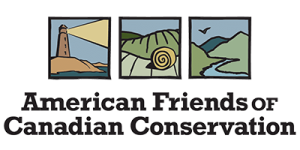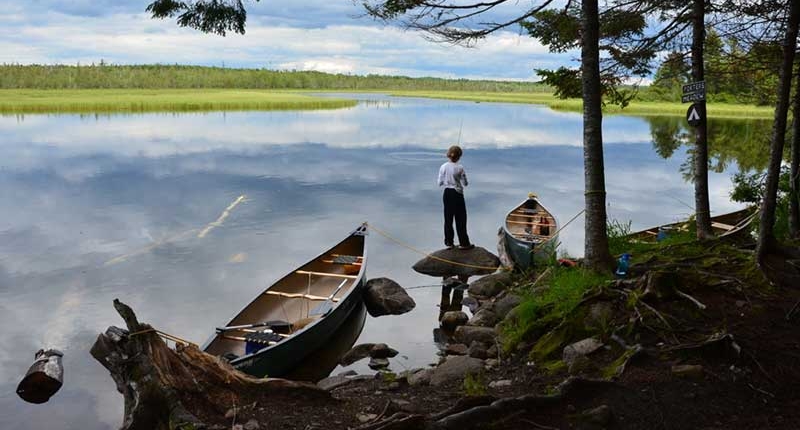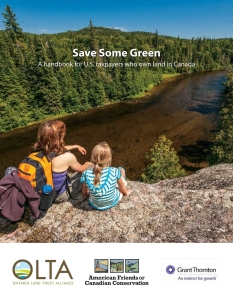Darkness is increasingly rare in North America but remains abundant in the St. Croix River watershed of Maine and New Brunswick. Nighttime satellite images show it as an inky corridor connected to a broad swath of protected landscapes in northern New England.
This obsidian expanse of intact forest, wetlands, rivers and streams, located within an eight-hour drive of 11 million people in Canada and the US, is a notable transborder conservation and Indigenous reconciliation opportunity.
The St. Croix River is the easternmost boundary between the US and Canada, but the plants, animals, air, water, and people demonstrate it is a continuous and relatively pristine region. The native people with the longest connection to this place are leading an effort to protect it for the future, with support from the Nature Trust of New Brunswick, the province of New Brunswick, American Friends of Canadian Conservation and funders from both countries.
The Wabanaki (People of the Dawn) thrived here for thousands of years, until Europeans arrived with their diseases, weaponry and concepts of wealth and land ownership. The Wabanaki confederacy’s territories extended as far north as Newfoundland and south to what is now Massachusetts.
The Peskotomuhkati of New Brunswick are one of the Wabanaki peoples. They describe their former existence as follows: The Peskotomuhkati way of life was a seasonal, cyclical round, in which the people left light footprints on the land. They would be in specific places at specific times of the year: upstream on the lakes in mid-December when the tommycod were spawning; inland after that to hunt caribou and tap maple; down to the Bay in the spring to dig clams and fish behind the weirs; out to the islands to take seal and porpoise; upstream to the salmon falls in the springtime, fishing and gathering as they went, adjusting the cycle in response to various influences.
The St. Croix was designated as the dividing line between the US and Canada in the 1783 Treaty of Paris. The boundary cleaved an aboriginal nation in two, isolating the Passamaquoddy in Maine and the Peskotomuhkati in New Brunswick Canada. To this day, families have members in reserves and towns on both sides of the river, which they refer to as the Skutik.
Donald Soctomah is the tribal historic preservation officer for the Passamaquoddy and Peskotomuhkati. After losing their land and being essentially confined to “reserves”, the people could not access the sites central to their native religion and seasonal life cycle. “We are one with the earth. We have to be in a specific place,” said Donald. The places on the New Brunswick side of the St. Croix River that provided physical and spiritual sustenance through the seasons are the focus of a multi-year bi-national conservation collaboration led by the Peskotomuhkati. The Canadian government provided close to $900K USD to support the effort.
Losing access to traditional sites has led to loss of cultural knowledge, according to Donald. Generations of relationship with the land gave the Passamaquoddy and Peskotomuhkati knowledge of the “unique micro-climates and landforms” where medicinal plants grow, hunting is best and where their culture can be renewed. Donald says that access to traditional sites in New Brunswick is important to his people from both sides of the river.
Creating the Skutik Indigenous Protected and Conserved Area (IPCA) will conserve those sites and allow the Peskotomuhkati to co-manage them. IPCAs are a new category of permanently protected lands established in the Convention on Biological Diversity as a legal mechanism to honor aboriginal peoples’ land rights and traditional knowledge.
Donald dreams of the Skutik IPCA benefitting past, present and future generations. Access to sources of food and medicine, ceremonial sites, and materials to support a revival of crafts and language can have a potent effect on current members and their families. He envisions it as a “place we can call our own. Where we can bury our dead, repatriated from museums.”
The IPCA is significant for conservation because it connects to two large provincial natural areas and mirrors the extensive protected acreage on the Maine side of the river. The core of the IPCA will be the historic Chiputneticook Lodge, and surrounding 2300 acres, that the Peskotomuhkati recently acquired from an Ohio family.
The St. Croix’s floodplains and uplands have long been recognized as critically important for preserving regional biodiversity. Recently, The Nature Conservancy (US) ranked it as an important natural corridor for climate adaptation within its Resilient and Connected Network, for Eastern North America.
The IPCA will incorporate nearly 6200 acres owned by the Province, which would be given protected status, plus key private lands that connect the tracts. The Nature Trust and American Friends will acquire those properties, ideally through donations. In combination, approximately 6700 acres will be conserved, connecting 77,000 acres of existing protected lands in the watershed.
We have identified 25 high-priority properties within the IPCA boundaries that are owned by US taxpayers, with a total estimated market value of approximately $1.8 M USD. American Friends will work with willing landowners from the US, and is raising funding from US sources to underwrite the transactions. The target properties all feature sites that can make Donald’s dreams a reality, while helping keep the St. Croix/Skutik watershed as the black jewel of the northeast Atlantic coast.





